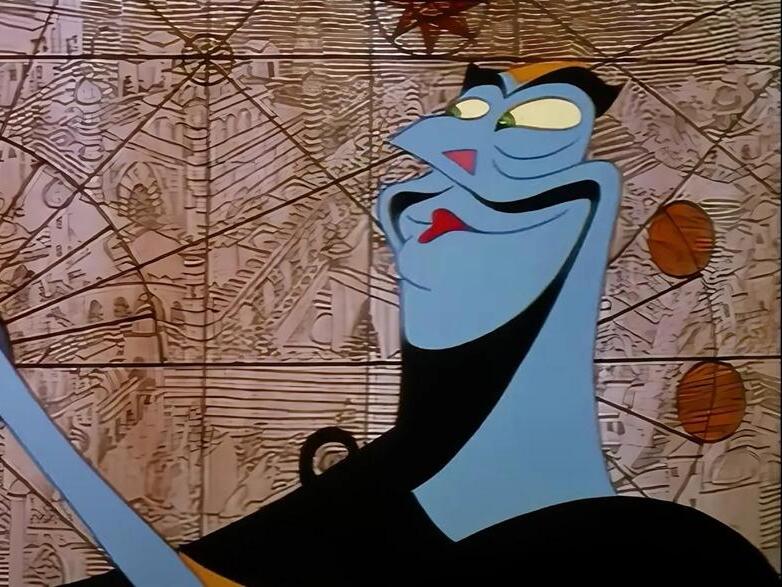Physical Address
304 North Cardinal St.
Dorchester Center, MA 02124
Physical Address
304 North Cardinal St.
Dorchester Center, MA 02124

“The best is yet to come,” Richard Williams said during the 1988 Academy Awards as he accepted a Special Achievement Award for his work on “Who Framed Roger Rabbit?” He was likely referring to “The Thief and the Cobbler,” a film he had been working on for nearly three decades and would continue to develop for many more years.
“The Thief and the Cobbler” began as an adaptation of Afghan writer Idries Shah’s “The Exploits of the Incomparable Mullah Nasrudin.” When agreements with the Shah family fell through, Williams reinvented the project by creating an original story set in the Middle East. The original hero was replaced by a nameless thief and a cobbler named Tack. Both characters were mute, relying on physical comedy inspired by Charlie Chaplin and silent film stars, while the animation moved towards organic and highly detailed realism that surpassed prewar Disney standards.
Williams was a known perfectionist, often going over budget and deadlines on projects. He envisioned “The Thief” as his magnum opus and the most ambitious animated film ever created. Unlike most studios that animated on twos (12 unique drawings per second), Williams animated on ones, with 24 drawings per second, giving the film a live-action fluidity.
Williams’ animation studio in London had a unique layout. “It was open-plan,” his son Alex said. Alex, who joined the production after college, noted, “Dad’s desk was right in the middle. If you needed a drawing, you could just go up to him.” This setup was quite different from other studios where access to directors was limited.
Initially, there was minimal storyboarding, as Williams felt it restricted his creativity. “None of us had a ‘big picture’ of what the film was going to be,” animator Tony White recalled. Williams always seemed to be changing things, pushing for quality and encouraging animators to improve and pitch their own ideas.
When Steven Evengelatos was asked to animate a sequence involving a thief in a polo game, he had no experience animating horses. Yet, he embraced the challenge, studying equine anatomy and incorporating the flat compositions and perspectives of Persian carpets into the scene.
One of the film’s most impressive animations is a chase scene where Tack follows the thief through a palace filled with optical illusions. The animation required precise calculations and a 25-foot-long background drawn on a single piece of paper. “We never knew if it was going to work until we shot it. Fortunately, it did,” Evengelatos said.
While Williams’ passion was infectious, his high expectations made him difficult to work with at times. “On my first day, I arrived late because the tube was delayed,” Evengelatos recalled. Williams was known for his rants when things didn’t go as planned, and for a few weeks, he avoided Evengelatos.
Williams made many sacrifices to continue working on “The Thief,” including turning down offers to direct “Watership Down” and Disney’s “Beauty and the Beast” after the success of “Roger Rabbit.” While some animators left to start their own studios, others stayed with Williams in London until the end.
The end came in 1992 when Warner Bros., the film’s latest investor, decided to take over after multiple missed deadlines and budget overruns. The studio reworked the film to capitalize on the popularity of “Aladdin,” renaming it “The Princess and the Cobbler.” Additional narrative scenes, voiceovers, and musical numbers were added hastily. Later, Miramax released another version titled “Arabian Knight.”
Williams remained resilient, although deeply affected by the loss of his project, which son Alex described as “a disaster from which he never fully recovered.” Artists learned to avoid mentioning “the feature” and Williams declined invitations to speak on documentaries about the film.
Despite never getting the theatrical release it deserved, “The Thief and the Cobbler” lives on. In 2007, animator Garrett Gilchrist began restoring the original film, and this version can be viewed on YouTube. Williams also wrote “The Animator’s Survival Kit,” an instructional book vital to animation programs worldwide. He received his third Academy Award for his short film “Prologue” and passed away on August 16, 2019.
Today, “The Thief and the Cobbler” is remembered as a groundbreaking work that never fully saw the light of day. Williams is celebrated as an animator who pushed the boundaries of the medium. “He saw animation as a legitimate art form, like painting or sculpture,” said filmmaker Kevin Shreck. Williams showed that animation didn’t have to be just for children or commercial purposes; it could be high art. His vision and persistence have left an indelible mark on the world of animation.
Source: IndieWire



